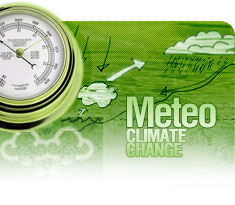http://www.nzherald.co.nz/weather/news/article.cfm?c_id=10&objectid=11733660&ref=rss
Researchers have created a model to reveal how climate change could combine the same weather patterns that led to a $1.3 billion drought.
The drought, that left much of the country brown over the 2012-13 summer, was the worst in 70 years in some regions, and was the result of slow-moving or "blocking" high pressure systems over the Tasman Sea and New Zealand over summer.
A new study led by Victoria University researchers measured the likelihood of extreme weather patterns occurring in modern day New Zealand compared to weather patterns in the late nineteenth century.
"We used new statistical techniques to examine the specific types of weather systems which passed over New Zealand during the 2013 summer drought," said Luke Harrison, who carried out the work alongside Professor Dave Frame.
They then used climate models to evaluate whether they were more likely to occur in the present day, when compared with the late nineteenth century.
"Our results show that due to changes in climate over the last 130 years, in response to both greenhouse gas emissions and ozone depletion, weather patterns such as those seen in the 2013 drought were 20 percent more likely to occur in the present day than in the late 1800s."
In another finding, the researchers showed there was a 50 per cent greater chance of exceptionally high pressure systems occurring over New Zealand in summer than was the case a century ago.
Harrison said the drought had a huge impact on New Zealand; according to Treasury estimates, it cost the economy at least $1.3 billion.



 Română
Română English
English


